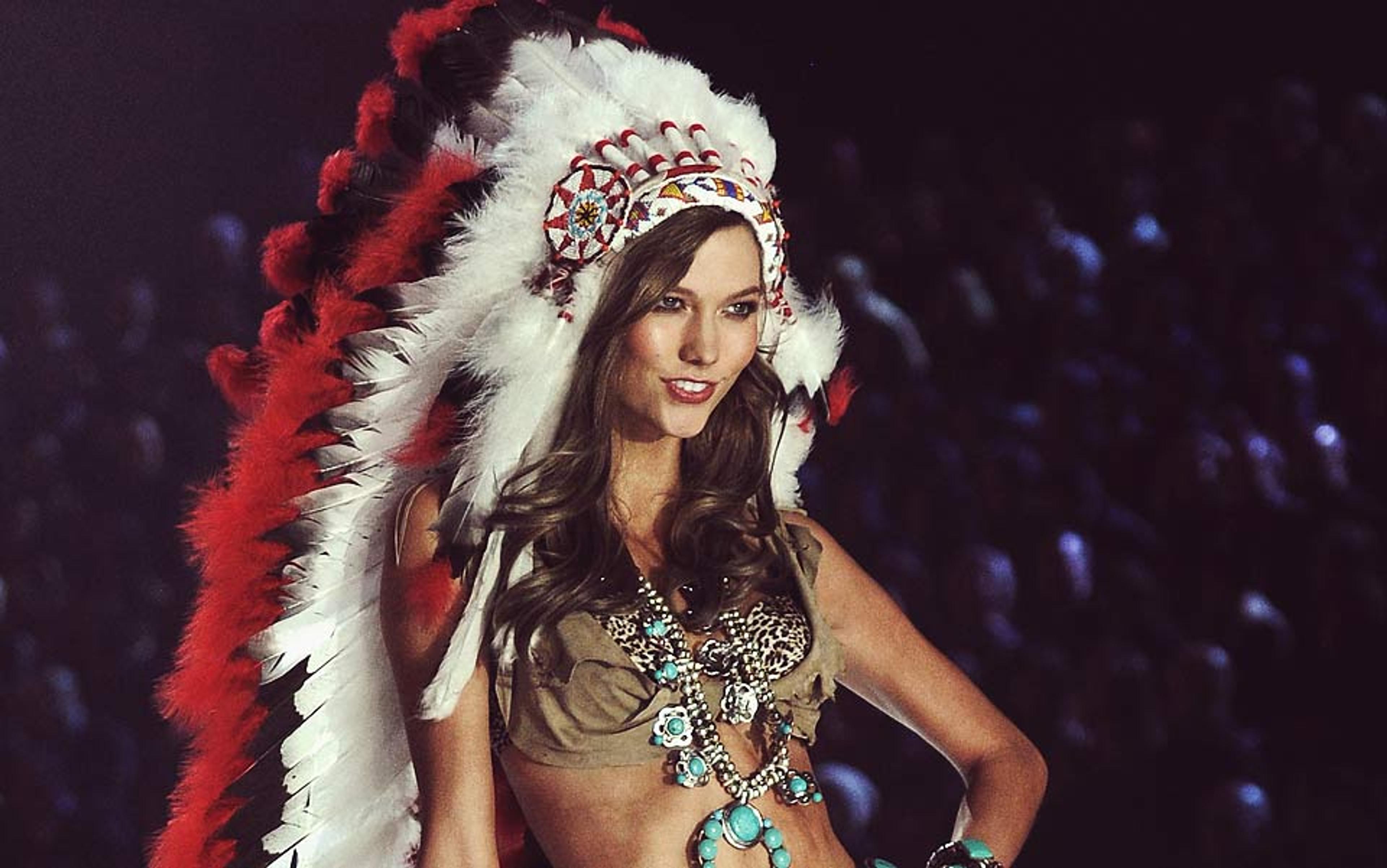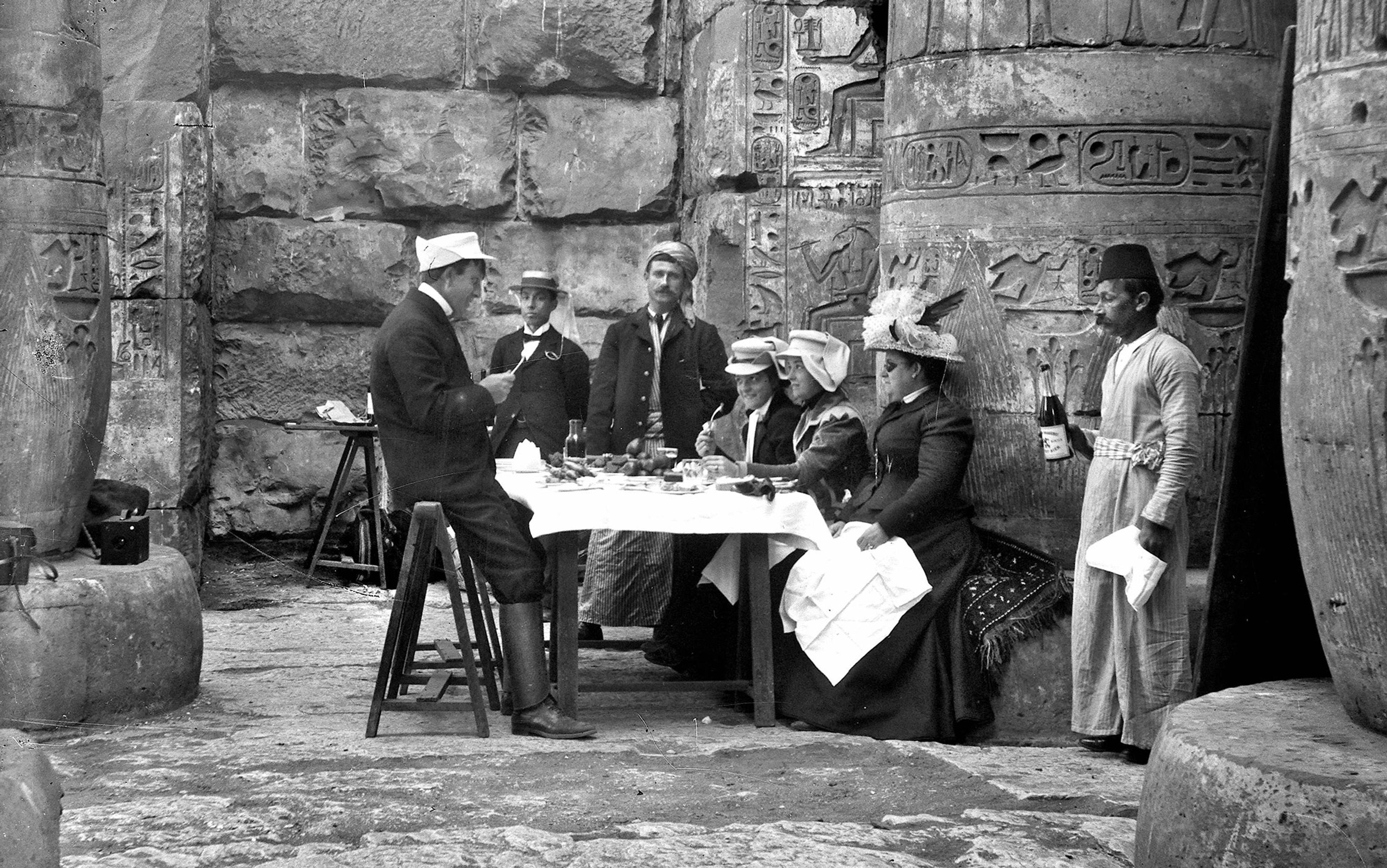I committed my first act of cultural appropriation when I was three years old. I was given a keffiyeh, the checkered scarf that is a symbol of Palestinian nationalism. My grandmother had more important things to worry about than Middle Eastern politics, and keffiyehs were readily available in the markets in Dubai where she lived. It became my comfort blanket when my mother took me there on a long visit. I brought it with me when we returned home to suburban London and I dragged it around for a few years, occasionally using it to dress up as a shepherd for school nativity plays. Towards the end of the second intifada in 2004, a cousin came to stay and spotted it at the back of my wardrobe. She was desperate to borrow it because, she said, ‘terrorist scarves’ had become ‘all the rage’ at school.
By that time, keffiyehs had long been adopted by Western fashion to signal third-world glamour. Madonna had worn one for a bit, and back in 1988 Time magazine assured nervous readers that the keffiyeh was ‘just an accessory… the ethnic type of look is in right now’. My cousin’s request seemed innocuous. It hadn’t occurred to me to ask whether it is possible to borrow something from another culture and give it your own meaning, without trampling on whomever it came from. It is so easy to take someone else’s identity and turn it into just another ‘type of look’. The symbols of one’s own culture, religion or race can arouse a fervent, protective sense of identity. Yet for the outsider, the disputes that arise from such feelings can seem insignificant and opaque.
Years later, a rugby captain at my university defended his team’s decision to wear loincloths and ‘black up’ their skin for a safari-themed party by arguing that they were ‘just going along with the theme’, and that no one had complained of being offended. The university disciplined the team by making them attend a cultural diversity seminar – as if it had all been a bit of innocent ‘banter’, like a child making an inappropriate joke.
The university rugby players took their cues from the buffoonery and racist comedy of the minstrel tradition. Although minstrel shows were created by white performers, some African American entertainers made a career of wearing blackface in the 19th and early 20th century. George Walker and his vaudeville partner Bert Williams billed themselves as the ‘Two Real Coons’, and Walker justified playing racial stereotypes for laughs by pointing to the number of families their ‘race institution’ supported. But later attempts to introduce more rounded characters and romantic storylines into their performances incurred the disapproval of The Chicago Tribune, whose critic complained: ‘there is hardly a trace of negroism in the play’. It is galling enough to hear an outsider defining your religion or culture; even more when they’re measuring how far you fall short against their standards.

Bert Williams and George Walker on stage in Sons of Ham. Photograph, c. 1900. Photo by Corbis
Symbols of any sort are a means to an end – they stir our memories in order to activate emotions. The cross reminds us of Christianity, and the story of the passion; Ronald McDonald of processed meat in a bun. Using a symbol for any new purpose can alter its meaning irrevocably. The swastika conveyed strength and good fortune to Hindu and Jain communities for centuries until it became, for much of the world, inextricably linked to Nazism. Today we appropriate symbols of other cultures in order to signal exoticism, or sensuality, or our rejection of mainstream society – but even the best intentions can seem to excuse a trade in stereotypes that harm others, and are the accreted sum of a hundred small offences besides our own.
Let’s say that we could stop all cultural appropriation tomorrow. No feathered headdress would ever again mar a fashion runway. Blackface would remain a thing of the past. Only those signalling their identification with the Palestinian struggle would wear the keffiyeh. Yet here’s a sticking point – since the scarf was once just a symbol of Arab masculinity, should we revert to that? Given that almost every cultural form has been purloined from somewhere else, it proves tricky to tell what belongs to whom, and to separate the offensive jerks from those pursuing respectful cultural innovation. The line between insider and outsider can be surprisingly indistinct.
I’m a case in point. I am ethnically Indian but with only distant ties to that region – my ancestors left it more than a century ago for East Africa. Apart from English, the only language my parents have in common is Swahili, but I can’t speak that beyond a few words, thanks to the once widespread belief that teaching children more than one language would damage their fluency in all. My polyglot mother gleefully compares me to a coconut: brown on the outside and white on the inside. This is often the case for second-generation immigrants, of course. Yet it still feels as if the real child of my parents – the one who didn’t forfeit her parents’ culture – might be lurking somewhere inside me like a vanishing twin.
I’m not a true heir to any culture. I realise that this is at least partly the result of my own lackadaisical approach – it is pleasant to picture myself picking up more Swahili or learning how to pin a sari in place, but less agreeable to knuckle down to it. As an adult, I’ve appropriated things from my parents’ culture and other places – picking the bits I like and discarding the rest. I am not alone: you might count yourself among the growing mishmash of cosmopolitans, for whom cultures are like ill-fitting second-hand coats, moulded by the shoulders and elbows of the deceased. Like Williams and Walker, I wonder which side of the line of offence we fall.
Let’s raise the stakes of appropriation – what if the cultural territory being trodden upon really is holy ground? It’s a question that came sharply into focus last summer when I heard that a group of whirling dervishes could be found in the inner suburbs of west London, linked to an organisation known as the Study Society. The only firm point in my identity is Islam – a touchy subject at the best of times. Sufism is often described as Islamic mysticism, and almost all orders ask new members to testify to a belief in a monotheistic God and in the Prophet, although this might be very liberally interpreted. Though I’m not a Sufi, I became intrigued when a friend told me it was her escape from the formalities of our childhood mosque, which transplanted its own rituals from East Africa.
I was surprised to learn that none of the Study Society’s dervishes have any strong religious affiliation, nor any theist leanings. Yet many of them show up dutifully once or twice a month to perform the Mevlevi Order’s traditional ceremony, which intersperses the ‘turning’ (as the pirouetting movement is known), with long readings from the Quran. As a Muslim, I couldn’t understand why anyone with no belief would do this month after month.
After every session, there was a kitchen gathering where the atmosphere teetered between contagious enthusiasm and juvenility. On my second visit, some of the dervishes rapped out a beat on daf drums while a younger member body-popped beside them. They were warm, friendly, and oblivious to my growing discomfort with the New Age tone.
That evening, I asked a woman in her early twenties, who had turned with eyes closed and an ecstatic smile, what she got out of it. ‘It’s like I’m in love when I turn,’ she explained. ‘It’s like giving birth to yourself again.’ I wondered what giving birth to herself had felt like the first time.
The Sufi order of the Mevlevi, to which whirling dervishes belong, was founded by Rumi’s disciples in the 12th century. But the Study Society’s practice in west London is not something that any traditional dervish would recognise. Islamic Mevlevi life mostly disappeared from Turkey in 1925 when Atatürk’s secularising regime shut down the dervish lodges and outlawed the order. Set up in England in 1951 as the Society for the Study of Normal Psychology, the Study Society was inspired by P D Ouspensky – a Russian esotericist who popularised an approach to ‘self-realisation’ that combined Eastern traditions and was intended for Western people. They invited one of the last few traditional Mevlevi sheikhs to teach them the ceremony; he was delighted to find an eager audience and made them promise to preserve the ceremony as he had taught it to them.
They took the beautiful turning ceremony, discarded the religious roots, and created an alternative to yoga
They did preserve it – but emptied of its original meaning. The society’s current ‘sheikh’ is a soft-spoken man named Philip, who said that the Society was his escape from a regimented boarding school in Berkshire in the 1970s. He explained that he used the turning almost as a meditative technique. The Quranic readings evoked a more pleasant aesthetic backdrop for him than, say, a Bible reading – precisely because no one can understand them. ‘As a non-Muslim,’ Philip said, ‘they’re just really nice sounds I say. If it was a Christian prayer, I might have a problem with that because that would be my own upbringing and culture, which would have certain connotations… In a way, we’ve taken what we were given and turned it into something new.’
Philip’s comments recall the words of a French ambassador to Istanbul, Édouard Thouvenel, who advised his readers in 1902 to see the ‘spectacle’ of the turning. He continued: ‘The Turks will protest at that word – spectacle. For them, it is probably a pious exercise… For the Europeans they are also, without doubt, part of the spectacle.’ But where Thouvenel simply described the ceremony as an entertainment for Europeans, the Study Society has actively helped to make it so. They took the beautiful turning ceremony, discarded the religious roots, and created an alternative to yoga. I couldn’t dislike any of the individual dervishes, but when I left for the final time it was with a sense that these Western, 21st-century hippies had taken a precious something of mine and trampled it into the ground.
The Toronto-based art historian Deborah Root, who studies the appropriation of Native American culture, tells a story in one of her essays about a hitchhiker she picked up travelling to the US West Coast in the 1990s. His name was Karma and he had noticed the medicine wheel (a sacred symbol in North American indigenous culture) hanging from her mirror. ‘Far out,’ he said, before explaining that he did not consider himself white because ‘his spirit was Native; he was, he said, a “white-skinned Indian”.’ Root reflects that: ‘I ridiculed this man… but the fact remains: I am white, I used to wear headbands, and I have a medicine wheel in my car.’
After reading this, I began to wonder how much my frustration with the Study Society had to do with insecurity about my own identity. The best way to stake your own claim as an insider, after all, is to mark out someone else who clearly doesn’t belong.
It would be anachronistic to say that Rumi himself would have disagreed with my identity politics. But his contemporary appeal lies in the sense of inclusion that runs through his poetry of divine love: the same tone of invitation that draws so many to evangelical Christianity. The Study Society liked to quote a version of one of his most popular verses: ‘Whoever you are, return! … This court of ours is not a court of despair.’ Taking the tribal approach, he suggests, risks missing out on some vital opportunity.
Identity politics are a response to perceived threat. The weaker the culture, the more it tends to fear appropriation – and Native American anger over cultural and religious appropriation is a case in point. In 1993, a ‘Declaration of War Against Exploiters of Lakota Spirituality’ ranked ‘wannabes’ such as Karma alongside ‘commercial profiteers and self-styled “New Age shamans”’. The urge to cut off cultural exchange with all outsiders, regardless of their intent, is an understandable response to a brutal history of cultural erosion. But it’s difficult to see how pulling up the drawbridge could strengthen Native American society in the long run. Some indigenous people agree – the University of Victoria philosophers James O Young and Conrad G Brunk note that some think the adoption of their beliefs by outsiders is a necessary step ‘if humans are to reharmonise life on earth’. But a price must be paid for the survival and spread of a culture’s core values: they will be open to a degree of reinterpretation.
Young and Brunk are among the first philosophers to have begun exploring the morality of different forms of appropriation, and in The Ethics of Cultural Appropriation (2009) they deem it ‘reasonable’ to be offended at the inauthentic representation of your religious beliefs. But Young also argues that giving reasonable offence might not be morally wrong. The expression of ‘an artist’s individual genius’, he argues, depends on his or her freedom to appropriate themes and subject matter from other cultures. As Picasso is said to have put it: ‘Good artists copy, great artists steal.’
Middle Eastern belly dancing was connected with pagan fertility rituals; early Christmas celebrations appropriated the festival of the pagan winter solstice
Young’s point applies to something far more common than those rare expressions of uncontested personal genius. Cultures that wish to avoid fossilising and becoming irrelevant must be open to new expressions of their own particular, collective ‘genius’. In doing so, they run the risk of becoming less connected to past traditions. They must trust that this will help to sustain and strengthen the ideas worth saving. The Cornell historian Benedict Anderson defined a nation as an ‘imagined political community’. His description might apply to any community and their shared culture: it is imagined, he says, because though members of even the smallest nation will never know most of their fellow-members, ‘yet in the minds of each lives the image of their communion’.
Every nation – every community – has its invented rituals and symbols, which spring up to help people grasp the terms of this intangible ‘communion’ in everyday life, fading away when they no longer do the job. And then new practices that suit new ways of life rise up to fill their place. Sir Walter Scott improvised many supposedly ‘ancient’ clan tartans in the 19th century – the cloth that had once been banned as a symbol of Scottish patriotism was being reimagined as a symbol of British unity. Middle Eastern belly dancing might originally have been connected with pagan fertility rituals or with travellers from India, just as early Christmas celebrations appropriated the festival of the pagan winter solstice. Private aural confession emerged as a Christian ritual in Ireland only in the sixth century, before spreading as a sacrament to the rest of Europe. All rituals and symbols are constructed, and inherited tradition is not always the best test of cultural authenticity. Religions and cultures – and indeed nations – have survived only by being open to new ways of representing themselves. Few have scrupled about drawing inspiration from others in the process. No matter how offensive – and even destructive – cultural appropriation can be, it is almost impossible to separate every murky incident from this wider process of exchange and adaptation.
I made my peace with the Study Society some months later when I visited a more explicitly religious Sufi order and was surprised to see just how much they had borrowed from Western culture. A female sheikh in hijab was leading the session – one of very few Muslim women in this country to lead a religious gathering that includes men. She explained that the order’s grand sheikh had adapted their practices after moving to the West in the 1990s – dialling down their devotional sessions from four hours to one, and working with his wife to raise female sheikhs inside the order. Islam’s core tenets have been expressed in dozens of varied traditions over the centuries – perhaps an occidental version is about to have its time, drawing inspiration from the rituals and practices of the West. Turnabout is fair play.
I won’t stop being angered by particularly crass examples of cultural imperialism anytime soon – and I don’t believe that anyone else should stop defending their own inherited cultural practices from being hollowed out and turned into costumes by adults who want to play dress-up. But it is worth remembering that the culture you hold dear will have been shaped by the practices of other cultures at some point. Look ahead: you have the power to shape the cultural future. Are you sure you won’t draw inspiration from others in turn?






